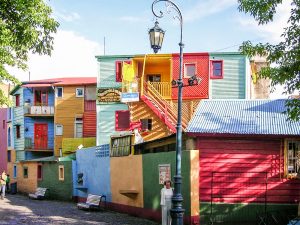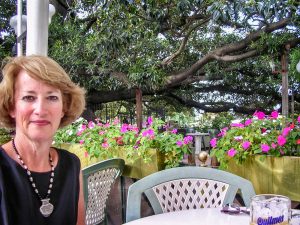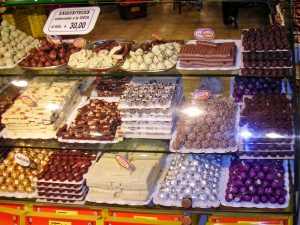Argentina: A Feast by Any Standard

A stroll through San Telmo seeking “Tango Action” is also a Binney & Smith exercise in crayon colors.
For many, Argentina is complicated. It is the eighth largest nation in the world, with many notable events and rulers – Juan and Eva “Evita” Peron, the Falklands War and national debt defaults. Yet she is one of the richest agricultural nations on the globe and has a national majesty of mountains and plains that is heart stopping. Does it sound like a reason to visit? You bet.
One percent of the world, 46 million people, live there. Buenos Aires, on the Atlantic Ocean is her capital in which one-third of all Argentinians reside. Often called the Paris of South America, she is one magnificent city.
The major challenge would be where to go and how to constrain yourself as the sights, stimulations and alluring neighborhoods are everywhere – tantalizing.
Avenida 9 de Julio: Considered South America’s grandest boulevard, the thoroughfare is chock-full of massive and glorious buildings like the Teatro Colon. The area also provides phenomenal people-watching.
Plaza de Mayo: This hub of government and religious buildings has often spontaneously been the center of activity. Besides, it is beautiful with its Jacaranda trees abloom in the spring.

The author’s wife, Barb, seated at a café in the Recoleta District. At some distance behind her is Eva “Evita” Peron’s mausoleum. Look closely, her spirit might be lurking.
Avenida de Mayo: This street is an architect’s dream, splattered with Art Deco and noveau buildings. Feast your eyes and then turn your experiences loose in a coffeehouse or bookstore conversation.
San Telmo District: This is the city’s oldest barrio. A highly oxygenated, cobblestoned warren of cafes, buskers and colors, this may be your place to learn the tango. Born along the Rio de Plata (separating Argentina from Uruguay) the tango and its flourishes is unique among world dances.
Recoleta Cemetery: Final resting place of Argentina’s aristocracy and leaders. The ornate mausoleums alone are worth the visit. Evita is rumored to still be romping around, but we could not track her down.
If a big city doesn’t excite you, how about a small one … say 100,000 people? Head southwest across the Pampas, some of the most fertile land in the world, to Bariloche. It is strung along the south shore of Nahuel Huapi Lake in the lake district.
To call it Argentina’s Aspen would be quite appropriate; its appeal lasts year round. One hikes, boats and recreates naturally in the warm season, and enjoys some of the world’s finest cold-weather sports, principally a world-class ski resort, in the winter. Food and accommodations are jet-set quality, and the town is known especially for world-class chocolate, touted and sold everywhere.
Bariloche is also an ideal jumping off point to explore the balance of the Argentine Lake District, which is comparable to Chile’s region to the west. Abundant with national parks, for those like us preferring more rustic, outdoor activities, the quantity and quality available is nearly intoxicating. There is a special small town at the head of the Nahuel Huapi, Villa La Angostura which we have favored. It captures all the beauty of the District in a Swiss-like Alpine setting.
While you are that deep into the south, the Argentinian Patagonia is not that far away. Were you to invest your next vacation in Argentina, committed to discovering her charms, you would return home with gobs of world-class stories, pictures and experiences.

A showcase, one of many, displaying death-by-chocolate opportunities in Bariloche, Argentina.
Article and photos by Joe Gschwendtner